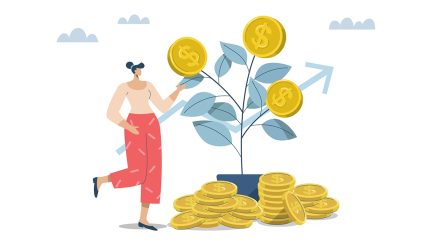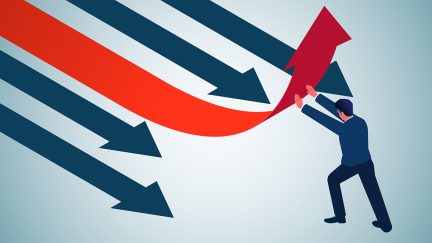Never miss a story — sign up for PLANSPONSOR newsletters to keep up on the latest retirement plan benefits news.
Americans Reflect on How Stock Market Volatility Will Affect Plans to Retire
Six in ten (61%) survey respondents are simply not sure how long it might delay their ability to save for retirement should a large 6,000 point drop in the Dow occur.
Lately, retirement plan participants have seen how volatile markets can be, with the Dow plunging nearly 3,000 points in early February, and the markets swinging wildly up and down since then.
Data from the Alight Solutions 401(k) Index showed participants reacted poorly to the volatility.
A new survey conducted by Gfk on behalf of in partnership with COUNTRY Financial finds Americans are expecting a volatile year in the stock market with slightly more than one-quarter (27%) saying the market will gain value and 23% expecting the market to lose value. Nearly three in 10 (29%) say they “don’t know” what to expect from the stock market in 2018, and 19% expect the market to stay the same.
More than half of Americans (52%) say they are financially prepared if the Dow were to lose an additional 6,000 points, yet only 28% actually have a financial safety plan in place. Two-thirds (65%) of Millennials do not consider themselves financially prepared for another down market in comparison to 70% of older Americans (age 65 and older) and men (57%), who believe they are equipped to handle a drop.
Six in 10 (61%) survey respondents are simply not sure how long it might delay their ability to save for retirement should a large 6,000 point drop in the Dow occur. For those that are able to estimate the amount of delay in their ability to save for retirement, responses ranged from zero to two years (23%) to more long-term impact of nine or more years (2%), with a mean of 2.69 years. Women are more likely than men to be “unsure” about how long a large drop in the Dow might delay being able to save for retirement (67% to 55%, respectively). Men are more likely than women to say that the delay in savings might only be zero to two years (28% to 18%).
The survey also revealed how many Americans would tap into savings to pay for an unexpected expense. Nearly half of Americans (49%) feel like they could pay a $1,500 emergency room visit using their savings, while one in five (19%) would need to rely on using a credit card to pay the emergency room bill. More than half of Americans (53%) feel like they could pay a $500 car insurance deductible using their savings, while one in six (17%) would need to rely on using a credit card to pay the insurance deductible. When faced with a $100 tax bill, 54% of Americans feel like they could pay the bill from their savings.
Among those Americans with access to using retirement savings vehicles, such as a 401(k), 403(b), 457 plan or individual retirement account (IRA), only 46% say they are contributing as much as they would like. Those who are not contributing as much as they like blame a combination of a full range financial responsibilities (home mortgage (23%), credit card debt (20%), student loans (16%), car loans (15%), and medical bills (8%)) holding them back from contributing more.

